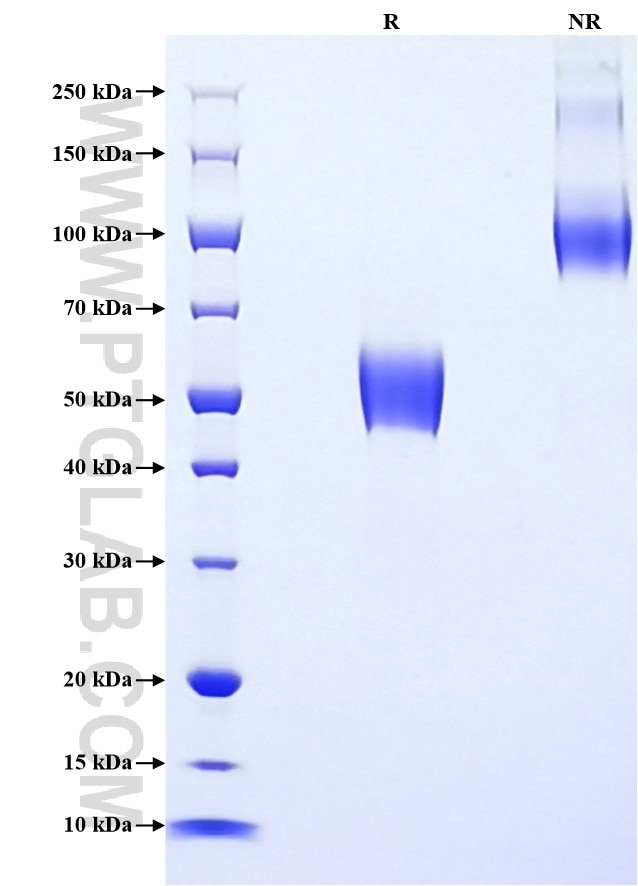Recombinant Human TMIGD2/CD28H protein (rFc Tag)
Species
Human
Purity
>90 %, SDS-PAGE
Tag
rFc Tag
Activity
not tested
Cat no : Eg2264
Validation Data Gallery
Product Information
| Purity | >90 %, SDS-PAGE |
| Endotoxin | <0.1 EU/μg protein, LAL method |
| Activity |
Not tested |
| Expression | HEK293-derived Human TMIGD2 protein Leu23-Gly150 (Accession# Q96BF3-1) with a rabbit IgG Fc tag at the C-terminus. |
| GeneID | 126259 |
| Accession | Q96BF3-1 |
| PredictedSize | 40.3 kDa |
| SDS-PAGE | 46-60 kDa, reducing (R) conditions |
| Formulation | Lyophilized from 0.22 μm filtered solution in PBS, pH 7.4. Normally 5% trehalose and 5% mannitol are added as protectants before lyophilization. |
| Reconstitution | Briefly centrifuge the tube before opening. Reconstitute at 0.1-0.5 mg/mL in sterile water. |
| Storage Conditions |
It is recommended that the protein be aliquoted for optimal storage. Avoid repeated freeze-thaw cycles.
|
| Shipping | The product is shipped at ambient temperature. Upon receipt, store it immediately at the recommended temperature. |
Background
Transmembrane and immunoglobulin domain-containing protein 2 (TMIGD2, also known as CD28H and IGPR1), plays a role in cell-cell interaction, migration, and angiogenesis. Through interaction with HHLA2, it costimulates T-cells in the context of TCR-mediated activation and enhances T-cell proliferation and cytokine production via an AKT-dependent signaling cascade. TMIGD2 has been associated with several diseases, particularly in the context of cancer. It is aberrantly expressed by human AML cells and can be used to identify and enrich functional LSCs. The predicted molecular weight of the TMIGD2 protein is 31 kDa. The higher molecular weight of TMIGD2 could be associated with its potential glycosylation at its extracellular region.
References:
1. Nader Rahimi, et al.(2012) Mol Biol Cell. 23(9):1646-56. 2. Yuwen Zhu, et al.(2013) Nat Commun. 4:2043. 3. Hao Wang, et al,(2024) Nat Commun. 15(1):11 4. Nader Rahimi, et al. ( 2012) Mol Biol Cell. 23(9):1646-56

